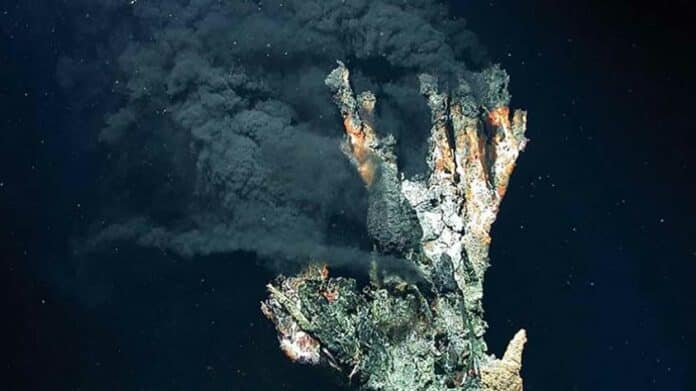Around 3.5 billion years ago, some of the earliest life forms, single-celled microorganisms or microbes, emerged. Evidence from this ancient time is scarce, but the Dresser Formation in the Australian outback contains rocks with traces of these early life forms.
In a recent study, researchers from universities Cambridge and Western Australia used high magnification electron microscopes to re-examine these 3.5-billion-year-old rocks, revealing tiny minerals like greenalite particles. These particles, just a few hundred nanometers in size, may have traveled thousands of kilometers, potentially influencing chemical reactions that formed the first DNA and RNA molecules.
The study uncovered the importance of hydrothermal vents, similar to underwater geysers, in supplying minerals that may have been a key ingredient in the emergence of early life.
Professor Birger Rasmussen, lead author of the study from the University of Western Australia, said, “We’ve found that hydrothermal vents supplied trillions upon trillions of tiny, highly-reactive greenalite particles, as well as large quantities of phosphorus.”
“Scientists are still unsure as to the exact role of greenalite in building primitive cells, “but this mineral was in the right place at the right time and had the right size and crystal structure to promote the assembly of early cells.”
The rocks studied have rusty-red, iron-rich jasper layers formed as mineral-laden seawater emerged from hydrothermal vents. The distinctive red color was previously thought to result from iron oxide particles, similar to rust, forming in the presence of oxygen.
However, considering Earth’s early oceans lacked oxygen, How did this iron oxide form? One theory suggests that photosynthesizing cyanobacteria in the oceans produced oxygen, but a significant atmospheric oxygen increase occurred around 2.4 billion years ago.
In their study, researchers discovered that the numerous tiny greenalite particles far outnumbered the iron oxide particles responsible for the red color of the jaspers. This finding discounts the theory that the iron oxide formed due to the activity of cyanobacteria, challenging the previous understanding of how these rocks obtained their distinctive color.
Study co-author Professor Nick Tosca from Cambridge’s Department of Earth Sciences said, “Our findings show that iron wasn’t oxidized in the oceans; instead, it combined with silica to form tiny crystals of greenalite. That means major oxygen producers, cyanobacteria, may have evolved later, potentially coinciding with the soar in atmospheric oxygen during the Great Oxygenation Event.”
Birger said that more experiments are needed to identify how greenalite might facilitate prebiotic chemistry, “but it was present in such vast quantities that, under the right conditions, its surfaces could have synthesized an enormous number of RNA-type sequences, addressing a key question in origin of life research – where did all the RNA come from?”
Journal Reference:
- Rasmussen, B., Muhling, J., Tosca, N.J.’ Nanoparticulate apatite and greenalite in oldest, well-preserved hydrothermal vent precipitates.’ Science Advances (2024). DOI: 10.1126/sciadv.adj4789
